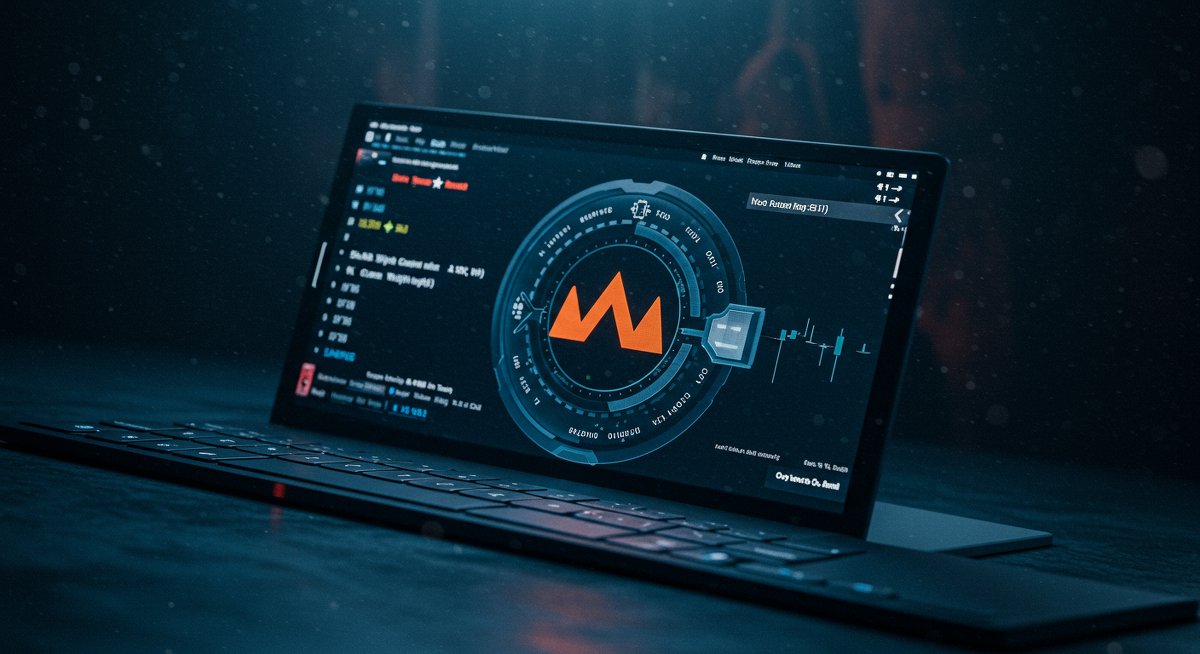Swapping Monero (XMR) anonymously is a cornerstone of privacy-focused trading. But, hidden fees can quickly erode your profits and compromise your financial goals. As experienced crypto traders, you understand the importance of every satoshi. This guide dives deep into the world of XMR swaps, helping you identify and eliminate those sneaky costs to maximize your returns while maintaining your anonymity.

The Problem: What's Really Happening
Monero's inherent privacy is a major draw, but the landscape of XMR swaps is complex. Hidden fees come in many forms, often buried within the exchange rates, network charges, or spread. These costs can significantly reduce the amount of XMR you receive or the value you ultimately get. Furthermore, the lack of transparency in some platforms makes it difficult to know exactly what you're paying for. As international traders, you need to be extra vigilant, as varying regulations and platform availability can influence fees.
Example 1: Hidden Exchange Rate Markup: Imagine you want to swap $1,000 worth of Bitcoin (BTC) for XMR. A platform advertises a competitive rate, but the actual exchange rate they use is subtly inflated. This means you receive less XMR than you should. Even a small markup (e.g., 0.5%) can translate into a loss of several dollars on a trade of this size. Over time, these markups can result in significant losses.
Example 2: Network Fees & Monero Mining Fees: When swapping, you'll encounter Monero network fees. Some platforms include these fees in the quoted rate, while others add them on top, and some are also influenced by the transaction size. While these fees are necessary for transaction processing, they can fluctuate, impacting your final cost. Moreover, some platforms may charge additional internal fees for processing, leading to a higher overall cost. Always check for these combined fee structures before proceeding.
Example 3: Spread Differences: The spread is the difference between the buying and selling price of an asset. On less liquid platforms, spreads can be wider, further eating into your profits. For example, if the current market price of XMR is $100, a platform with a 2% spread might sell it to you for $102, effectively adding $2 to every $100 you trade. Active traders need to select platforms that reduce the impact of spreads to achieve a better rate.
Why This Affects International Traders
International traders face unique challenges. Currency conversions can introduce additional fees. Some platforms may not be accessible in your region or may have higher fees. Furthermore, regulatory environments vary widely, impacting the availability and cost of trading options. Currency fluctuations can also influence the effective cost of your swaps. Finally, the time of your transactions in relation to global market trading times may affect the fees you are charged.
Impact of Multiple Conversions: Imagine you are trading from Europe, converting EUR to USD, and then swapping USD for XMR. Each conversion incurs fees, which add up. A seemingly small fee on the EUR/USD conversion (e.g., 0.2%) can become substantial when combined with the XMR swap fees. Currency conversion fees add to the total cost of your swaps, increasing your overall expense.
Regional Platform Limitations: Not all platforms are available globally. Some platforms may have geo-restrictions, impacting your access to the best rates. Also, transaction fees may differ depending on your location. Limited platform options in your region can reduce competition, leading to higher fees. International traders must research which platforms work in their region.
Regulatory Hurdles: Different countries have different crypto regulations. Some may require KYC (Know Your Customer) verification, which can impact your anonymity. Others may impose taxes on crypto transactions, increasing your overall costs. Navigating these regulatory landscapes is crucial for international traders. Be sure to understand the rules that apply to your country.
Root Causes Analysis
Hidden fees stem from several factors:
- Lack of Transparency: Some platforms intentionally obscure their fee structure.
- Market Volatility: Rapid price changes make it difficult to quote accurate rates.
- Platform Revenue Models: Platforms may rely on hidden fees as a revenue source.
- Network Congestion: High transaction volumes can increase network fees.
- Liquidity Constraints: Low liquidity can widen spreads.
By understanding these root causes, you can make informed decisions and minimize your costs.

Step-by-Step Solution Framework
Here’s a step-by-step approach to minimize XMR swap fees:
Research and Compare Platforms: Identify platforms known for low fees and strong privacy. Check reviews and compare rates. Consider aggregators that provide real-time comparisons. Investigate the fee structure carefully.
Evaluate Fee Structures: Look for platforms with transparent and competitive fee structures. Pay attention to exchange rate markups, network fees, and spreads. Read the fine print before any transactions. Choose platforms that are upfront about their charges.
Optimize Timing: Swap during periods of high liquidity and low volatility. Spreads are often narrower during peak trading hours. Monitor market conditions to find the best times to trade. Consider swapping your funds when the market is stable.
Use Aggregators: Utilize swap aggregators, which compare rates across multiple platforms. These tools help you find the best deals. They often have real-time comparisons and are designed to save you money.
Consider Privacy-Focused Exchanges: Prioritize platforms designed with privacy in mind, as they often offer more competitive rates to attract users. These platforms may have better fee structures. They can be more transparent about their fees.
Example: Using Swap Aggregators: Swap aggregators like Swapzone can quickly compare rates across multiple platforms. You provide the amount of XMR you wish to swap and your target currency. The aggregator then displays the best rates, taking into account exchange rates and fees. This tool significantly reduces the time spent comparing platforms and helps you find the most cost-effective option. For example, swapping $1,000 worth of XMR, you might save $10-$20 by using an aggregator to select a platform with a lower fee.
Example: Monitoring Network Fees: Before initiating a swap, check current Monero network fees. Tools like Block explorer can provide insights into the current network congestion. If fees are high, consider delaying the swap until fees decrease. You could save 1-2% on your transaction costs by timing your transactions according to network conditions. It's a strategic choice that yields financial returns.
Example: Privacy-Focused Exchanges: Platforms like Godex, that do not require KYC, may have a fee structure that is more beneficial to you. The reason for this is that they are often competing with other privacy-oriented platforms. These platforms understand the importance of competitive fee structures. They are often built with the users' privacy as their main feature.
Prevention Strategies
To proactively avoid hidden fees:
- Due Diligence: Thoroughly research platforms before swapping.
- Fee Transparency: Only use platforms with clear fee structures.
- Rate Monitoring: Continuously monitor exchange rates and fees.
- Diversification: Don't rely on a single platform; diversify your options.
When to Seek Professional Help
If you suspect fraudulent activity or have lost funds, seek professional help. Reputable crypto recovery services and legal professionals specializing in crypto can offer assistance. Be sure to report any suspicious activity to the appropriate authorities.
International Legal Protections
Your rights as a crypto trader are governed by local laws and international regulations. Educate yourself on these protections and report any scams to the relevant authorities. Remember to consult legal counsel for specific guidance in your jurisdiction.
Your Action Checklist
- Research and compare platforms: Start with Swapzone and other aggregators to compare the best rates.
- Prioritize transparency: Only trade on platforms with clear fee structures.
- Monitor market conditions: Optimize timing to avoid peak fees and volatility.
- Diversify: Don't rely on just one platform; explore alternatives.
- Stay informed: Regularly review regulations and protect your rights.
Next Steps in Your Trading Journey
By taking these steps, you can effectively combat hidden fees in XMR swaps, boosting your profits and preserving your anonymity. Continue your education, stay informed, and always trade responsibly. The crypto landscape is always changing, so continue your education on how to save money, and protect your privacy. Remember to always check your local crypto regulations and consult a financial advisor if needed.